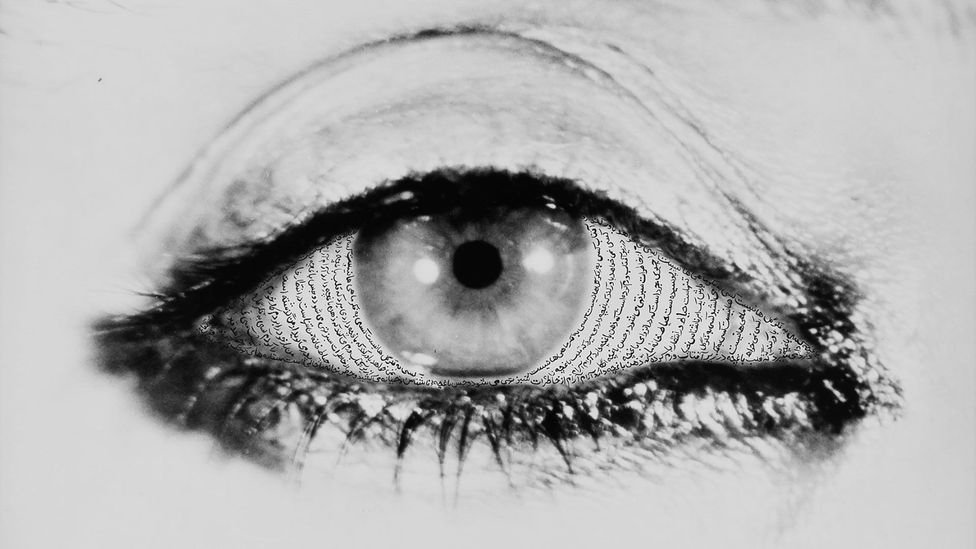Manjeera
Knowledge can be gained at any age. After having a detailed study on topics there are things unknown to us. So, we at Abirpothi present before you the lesser-known facts about artists around the world.
Shirin Neshat
Art is our weapon. Culture is a form of resistance.
-Shirin Neshat
Shirin Neshat is an Iranian-born visual artist and filmmaker based in New York City. She is best known for her work in photography, art and film, often exploring themes of gender, identity, and politics in the context of Islamic culture and the Middle East. Her 1993 series Women of Allah allowed Neshat to carve a name for herself in the world of contemporary art. Neshat’s artwork has been exhibited internationally and is recognized for its radical nature. In addition, Shirin Neshat is also a prominent advocate for human rights and social justice causes, with her art often elucidating her politics.
11 lesser-known facts about Shirin Neshat
- Shirin Neshat was commissioned by the The National Portrait Gallery to make a portrait of Malala Yousafzai, Nobel Peace Prize winner and Pakistani girls’ education activist.
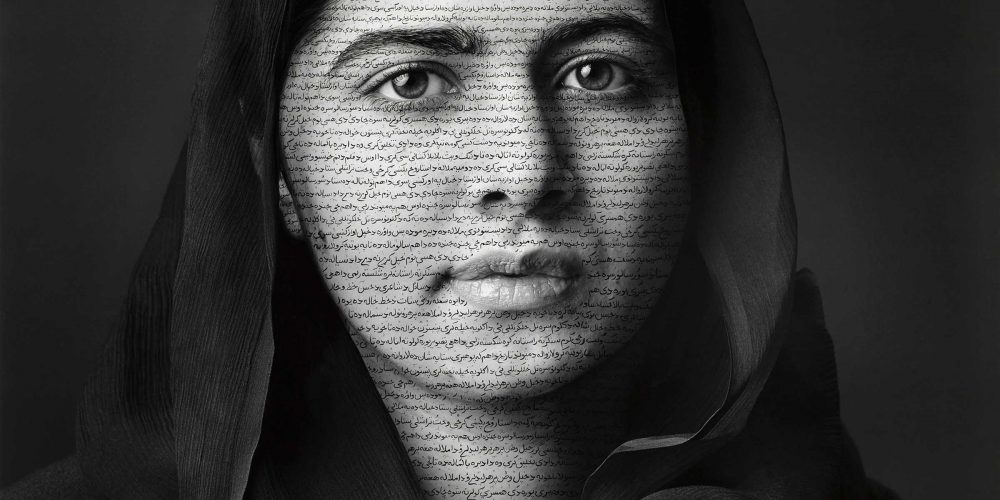
Neshat’s portrait of Malala Yousafzai
Courtesy: National Portrait Gallery - Neshat did not think she would be successful artist and after graduating from art school in 1982, she gave up on art. She would return to it only a decade later to achieve tremendous success.
- When Neshat first came to use film, she was influenced by the work of Iranian director Abbas Kiarostami.
- The artist did not like her work in college, even going as far as to say, “It was really terrible—I destroyed evidence of all this work. Honestly, I had to be one of the weakest artists at the school.I applied to Berkeley’s graduate program, and my professor told me that I just barely got in.”
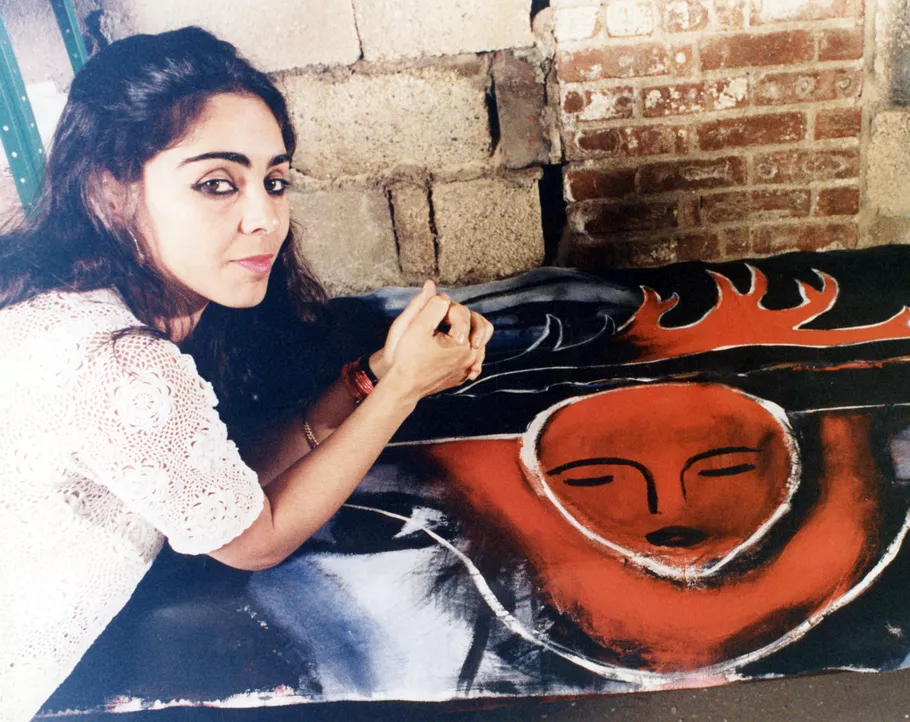
Shirin Neshat with one of her paintings circa 1980s.
Courtesy of the artist and Gladstone Gallery - Neshat has directed an opera performance before. At the 2017 Salzburg Festival, the artist directed Giuseppe Verdi’s opera Aida, with Riccardo Muti as conductor and Anna Netrebko singing the main character.
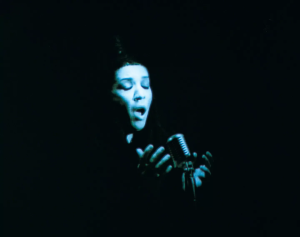
A Still from Neshat’s film Turbulent (1998)
Courtesy: MCA Chicago - Shirin Neshat is very politically involved and once she undertook a three-day hunger strike in July 2009 at the United Nations Headquarters, New York in protest of the 2009 Iranian presidential election.
- Neshat’s film Turbulent (1998) addressing Iran’s prohibition of women singing in public won the Venice Biennale’s Golden Lion award.
- Her most famous Women of Allah series was not never going to experience the light of day. The artist randomly decided to experiment on Xerox copies of few images, “I began to write on Xeroxes of the pictures—lines from the poetry I’d brought back from Iran. It was totally playful. I had no goal of showing the work”.
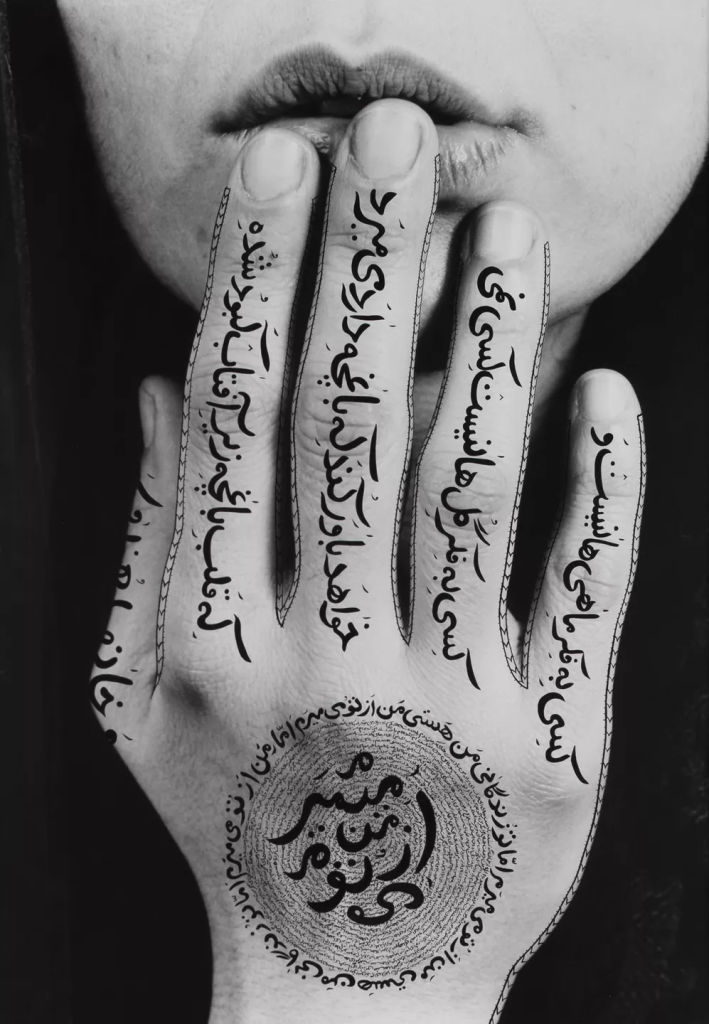
Untitled, 1996. One of the prints from the Women of Allah series.
Courtesy of the artist and Gladstone Gallery - She studied at a Catholic school in Tehran and absolutely hated the experience. She describes the ordeal, ““the nuns were very strict – it was like being punished for not having done anything wrong”.
- One of her earliest artistic inspirations in UC Berkeley came from Frida Khalo, who was a female artist and a political figure.
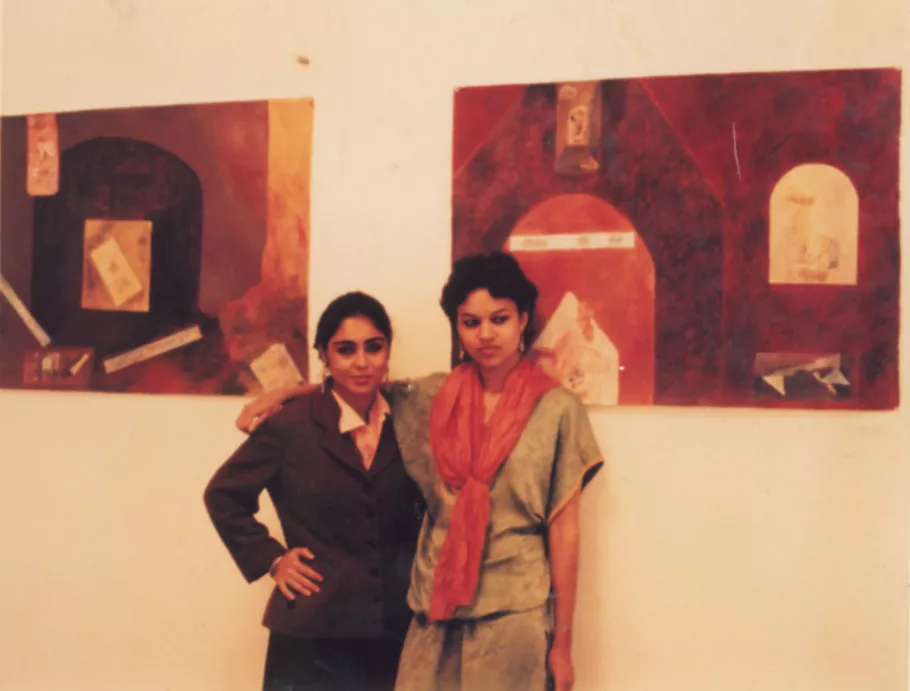
Shirin Neshat (left) at Berkeley circa 1979.
Courtesy of the artist and Gladstone Gallery - She was awarded one of the richest and most prestigious art prizes in 2006, The Dorothy and Lillian Gish Prize, which is given annually to “a man or woman who has made an outstanding contribution to the beauty of the world and to mankind’s enjoyment and understanding of life.”

